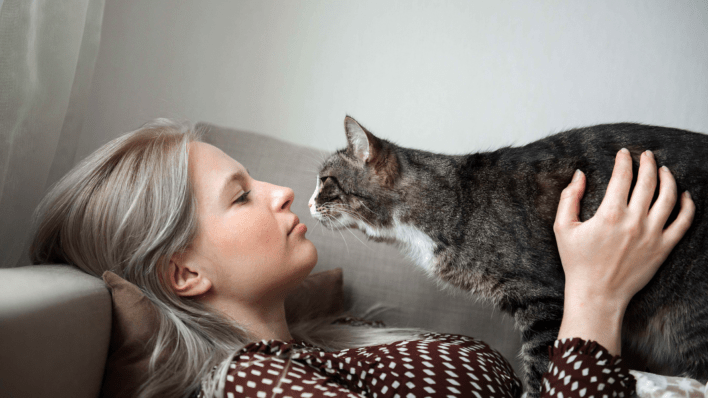Full article with thanks to: cuteness.com/article/figure-out-cats-emotions
Cats communicate their feelings through body language and vocalizations. Observing your cat’s body, legs, ear position, tail, fur and whiskers will help you understand what she is feeling. Similarly, identifying different vocalizations, like purring or meowing, will give you insight into her emotions.
Recognising Content Cats
A content cat is generally relaxed and calm. Her ears will be up and slightly forward or may swivel towards nearby sounds. She may lie on her side or belly and tuck her feet underneath her, or lie on her back with her legs splayed. Her eyes may be half-closed or she may blink slowly. Purring or kneading with her paws are other signs of contentment.
If your cat is happily greeting you, she will approach with her tail up and whiskers forward, then rub her face or chin against you. She may also give a high-pitched gurgle or quiet, murmuring meows.
Identifying Fear and Anxiety
One of the most obvious signs of fear in a cat is laying her ears back. The closer to lay flat against her head they get, the more anxious she feels. A fearful cat’s eyes will be open wide and her pupils may dilate. She may crouch closer to the ground or arch her back and raise the hair on her back and tail. Her tail will be pulled in closer to her body and may move back and forth at the tip. Her whiskers may be flattened back against her face.
A more seriously frightened cat may also hiss, spit or strike with her claws, especially if someone approaches her and she cannot run away.
Spotting Anger and Aggression
A cat that is on the offensive will have narrowed pupils and ears that are twisted back or to the side, but still partially erect. Her whiskers may be stiff and pushed forward. The hair along her back may stand up and her tail may move slowly or rapidly from side to side.
Growling is a sure sign of a cat on the offensive. She may also hiss or spit. Do not make direct eye contact with or approach an angry or aggressive cat, as this may lead to scratches and bites.
Noticing Frustration
A cat will usually become frustrated if she can’t reach an object or a place she wants. She may have wide eyes, ears pricked and turned toward her goal and whiskers pressed forward. If she cannot get any closer to the object of her attention, she will stand near it and pace. She may also begin meowing.
If a cat is frustrated because of over-stimulation, she may lay her ears back, dilate her pupils and twitch her tail from side to side. This often happens during play that grows too intense and may precede a growl or bite.
Full article with thanks to: cuteness.com/article/figure-out-cats-emotions
Get the latest from our pet advice blog.
If you’re looking to travel your pet within or outside the United Kindom (Example: Birmingham to Paris), then get in touch with us by completing our quick and easy quote form.

